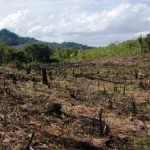In addition, Grameen Shakti has installed 7,000 biogas facilities that convert animal dung and organic residues into pollution-free biogas and slurry. The biogas can be used to cook food, to provide lighting and to produce electricity. The slurry serves as organic fertilizer and fish feed. The goal is to build 500,000 biogas units by 2015. GS has also distributed over 20,000 improved cooking stoves, and aims to provide one million stoves by 2010, covering 35,000 villages. At least 20,000 jobs have already been created; and at least 100,000 direct jobs intended by 2015, mainly for women. Systems such as this contribute to enhanced energy security and shield the economy from escalating energy prices of conventional fuels and their price volatility.

Another example is DESI (Decentralised Energy Systems India) EmPower Partnership Programme [1], run by Dr. Hari Sharana, where the power from local renewable (biomass) energy resources is about 30 percent cheaper than grid-connected electricity. That’s because large centralized power stations are capital intensive, and distribution and transmission of electricity incur large energy losses. DESI builds an entire local community of energy providers and users, including micro-enterprises. Each partnership project comprises a biomass gasification-based power plant with pure gas engine, water pumps for irrigation replacing diesel pumps, battery charging, a mini-grid with connections to each household in the village, traditional agro-processing units replacing diesel, battery-run LED (light emission diode) lighting charged by the power plant or solar PV panels replacing kerosene, biomass processing (cutting, drying, briquetting and management), energy crops, vermiculture, and fisheries.
A typical investment portfolio is about Rs. 8.6 million ($185 689) per village, of which the power plant 75 kW costs Rs. 4.5 million ($1 221/kW), total energy services, micro-enterprises and infrastructure cost Rs. 3.3 million, and project development and implementation, including coordination and travel, building, training and a cluster centre cost Rs. 0.8 million. Thus, 100 villages would cost $18.7 million for 7.5 MW. So far, three villages have been electrified in this way.
Financing for the projects was obtained from multiple sources, including equity from local partners who formed cooperatives and societies, DESI power loan and equity from promoters and external investors, awards, selling of carbon emission reductions (CERs), and other loans.
My reservation about the DESI scheme is that it is based on growing dedicated bioenergy crops to service the biomass gasification unit, which would compete with growing food. Furthermore, there does not appear to be any effort to recycle wastes or to manage irrigation water sustainably. An equivalent scheme based on anaerobic digestion of livestock, human and crops wastes combined with water harvesting and other renewable energy installations would be much more sustainable [3, 4] (see also “How to Beat Climate Change & Be Food and Energy Rich – Dream Farm 2” [11]).
Obviously, what’s needed is for governments to redirect their energy subsidies from fossil fuels to green energies. Energy-related emissions currently account for 61 percent of all GHG emissions. The power sector alone is responsible for 41 per cent of total CO2 emissions in 2006, largely through the combustion of fossil fuels to generate electricity.
China a Global Leader in Wind Energy
Dong Wu of the UNCTAD Secretariat reports that China has emerged as a global leader in wind energy [1], more than doubling its overall capacity every year since 2006. In 2008, China installed 6 GW, bringing its cumulative installed capacity to more than 12 GW and set to rise to 20 GW by 2010. This will make China the second largest producer of wind energy in the world after the United States, overtaking Germany and Spain.
China is projected to reach 30 GW installed capacity by 2011, well ahead of the target year 2020 originally set by the Chinese Government. Installed capacity is only half of China’s success story; the other half is the emergence of a competitive local industry. Domestic manufacturers accounted for 70 per cent of newly-installed capacity in 2008, up from 30 per cent in 2004. Goldwind and Sinovel, China’s leading turbine manufacturers, already rank among the world’s top 10 manufacturers; Dongfang, Windey and several other Chinese companies are coming up.
China’s wind generator industry has made significant progress in developing and building up a domestic supply chain that links turbine manufacturers, component suppliers and technology services. As a result, China is poised to become a major player in the global wind power equipment market within the next few years.
Government policies have played a decisive role in the rapid development of the country’s wind energy sector. China’s Renewable Energy Law, which came into effect in 2006, set targets and provided special funds and financial incentives to the renewables sector to meet those targets. The goal was to establish a “basic system of renewable energy technologies and industry” by the year 2010 as a foundation for the development of “relatively complete”, large-scale domestic manufacturing capabilities, primarily based on China’s own intellectual property rights.
A government financial incentive package aimed at promoting domestic wind power equipment manufacturers offers 600 RMB per kW for each of the first 50 turbines of over 1MW produced, if they have been tested and certified by the Chinese authorities, put into operation, and connected to the grid.













